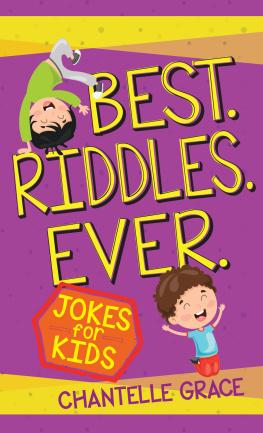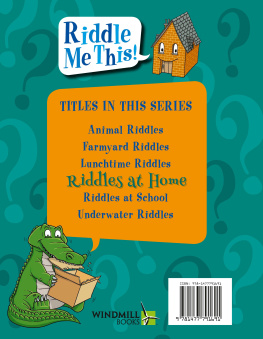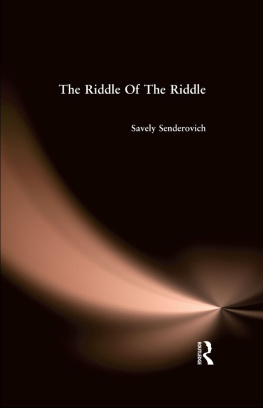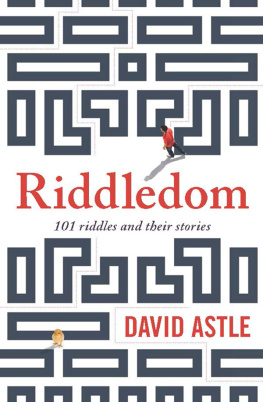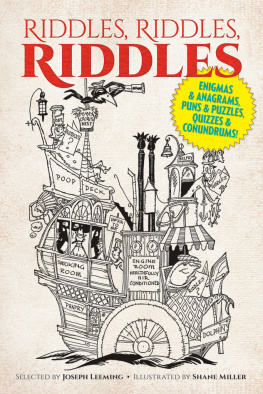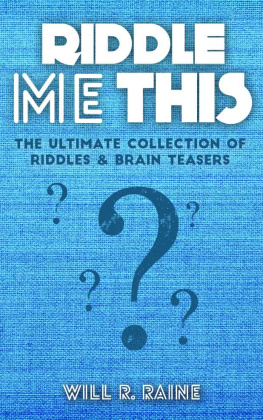ROUTLEDGE LIBRARY EDITIONS: FOLKLORE
Volume 16
TURANDOTS SISTERS
TURANDOTS SISTERS
A Study of the Folktale AT 851
CHRISTINE GOLDBERG
First published in 1993
This edition first published in 2015
by Routledge
2 Park Square, Milton Park, Abingdon, Oxon, OX14 4RN
and by Routledge
711 Third Avenue, New York, NY 10017
Routledge is an imprint of the Taylor & Francis Group, an informa business
1993 Christine Goldberg
All rights reserved. No part of this book may be reprinted or reproduced or utilised in any form or by any electronic, mechanical, or other means, now known or hereafter invented, including photocopying and recording, or in any information storage or retrieval system, without permission in writing from the publishers.
Trademark notice: Product or corporate names may be trademarks or registered trademarks, and are used only for identification and explanation without intent to infringe.
British Library Cataloguing in Publication Data
A catalogue record for this book is available from the British Library
ISBN: 978-1-138-84217-5 (Set)
eISBN: 978-1-315-72831-5 (Set)
ISBN: 978-1-138-84411-7 (Volume 16)
eISBN: 978-1-315-73060-8 (Volume 16)
Publishers Note
The publisher has gone to great lengths to ensure the quality of this reprint but points out that some imperfections in the original copies may be apparent.
Disclaimer
The publisher has made every effort to trace copyright holders and would welcome correspondence from those they have been unable to trace.
TURANDOTS
SISTERS
A Study of the
Folktale AT 851
Christine Goldberg
Copyright 1993 Christine Goldberg
All Rights Reserved
Library of Congress Cataloging-in-Publication Data
Goldberg, Christine.
Turandots sisters : a study of the folktale AT 851 / Christine Goldberg.
p. cm. (Garland folklore library ; vol. 7) (Garland reference library of the humanities ; vol. 1694)
Includes bibliographical references.
ISBN 0-8153-1285-7 (acid-free paper)
1. TalesHistory and criticism. 2. RiddlesHistory and criticism. 3. Princess who cannot solve the riddle (Tale).
I. Title. II. Series. III. Series: Garland folklore library ; 7.
GR72.5.G65 1993
Printed on acid-free, 250-year-life paper
Manufactured in the United States of America
Contents
The Garland Folklore Library series consists primarily of meritorious masters theses and deserving doctoral dissertations in the field of folklore which for one reason or another were not published upon their initial completion. In theory, all theses and dissertations are supposed to be contributions to the collective knowledge of a given discipline, but in practice it seems the vast majority are simply filed and forgotten. Sometimes the dissertation is too technical; sometimes it is too long for it to be welcomed for publication by cost-conscious university presses. Sometimes the dissertation is eminently publishable, but its author by the time the dissertation is finished is so heartily sick of the subject that he or she wants to put it aside forever.
In any case, there are a number of outstanding dissertations in folklore which warrant a wider readership and which belong in the library of any educational institution or individual with a serious interest in folklore. A few of these are in fact already well known to professional folklorists who may have bothered to send for them through inter-library loan or in more recent times purchased copies from University Microfilms International in Ann Arbor, Michigan. However, it should be noted that not all dissertations are available through UMI. The appearance for selected folklore dissertations and theses, both old and new, in the Garland Folklore Library series will make it much easier for libraries and individuals to obtain these significant studies.
Among the most important hitherto unpublished folklore dissertations are such works as motif and/or tale type indices, historic-geographic (comparative) in-depth studies of single folktales or ballads, and surveys of specialized folklore scholarship e.g., of a particular country or group. There are in addition valuable filed collections of folklore data to be found in dissertations. Clearly, there is no dearth of dissertations in folklore which could and should be published. Folklore field data, for example, never cease to be of valueeven years after collection. It is the intention of the Garland Folklore Library series to make a number of folklore theses and dissertations available to the growing worldwide community of folklorists.
The most basic and fundamental theoretical approach in folkloristics consists of a refined form of the comparative method. This method, known as the historic-geographic or Finnish method, requires considerable time, adequate library resources, and polyglot expertise. The first task is to assemble all known versions of an item under investigation whether these texts be in print or housed in manuscript archives. There may be hundreds of such versions, the majority of which will need to be translated into the native language of the folklorist carrying out the study.
Once all available texts have been gathered together, the folklorist may attempt to determine the possible point of origin of the folktale or ballad (or whatever genre is being studied). This hypothetical reconstruction of the so-called ur-form of the folklore item is based upon a painstaking analysis, trait by trait, of that item. Even if, as is the case at the end of the twentieth century, the folklorist does not necessarily expect to be able to determine the place of origin or the form of the item which presumably generated every single one of the cognate versions assembled, he or she will in theory at least be able to discern distinctive subtypes of the basic tale or ballad type, such subtypes being identified by the presence or absence of characteristic traits or elements. It is often possible to make an educated guess about the inter-relationships of various subtypes of a given folktale including plausible thoughts about which subtype may have given rise to another and about probable paths of diffusion of one or more subtypes. (For the most extensive review of the results of historic-geographic studies in folklore, see Goldberg 1984. For additional discussions, see Korompay 1978; Honko 1985a and b; and Dundes 1986.)
The present volume is an excellent exemplar of the historic-geographic method. It is, however, somewhat unique insofar as it considers not one genre, but two genres: the folktale and the riddle. The subject of inquiry is a constellation of riddle tales including The Princess Who Cannot Solve the Riddle (Aarne-Thompson tale type 851) and Turandot (Aarne-Thompson tale type 851A) in which a princess sets riddles for her suitors to be answered on pain of death.


